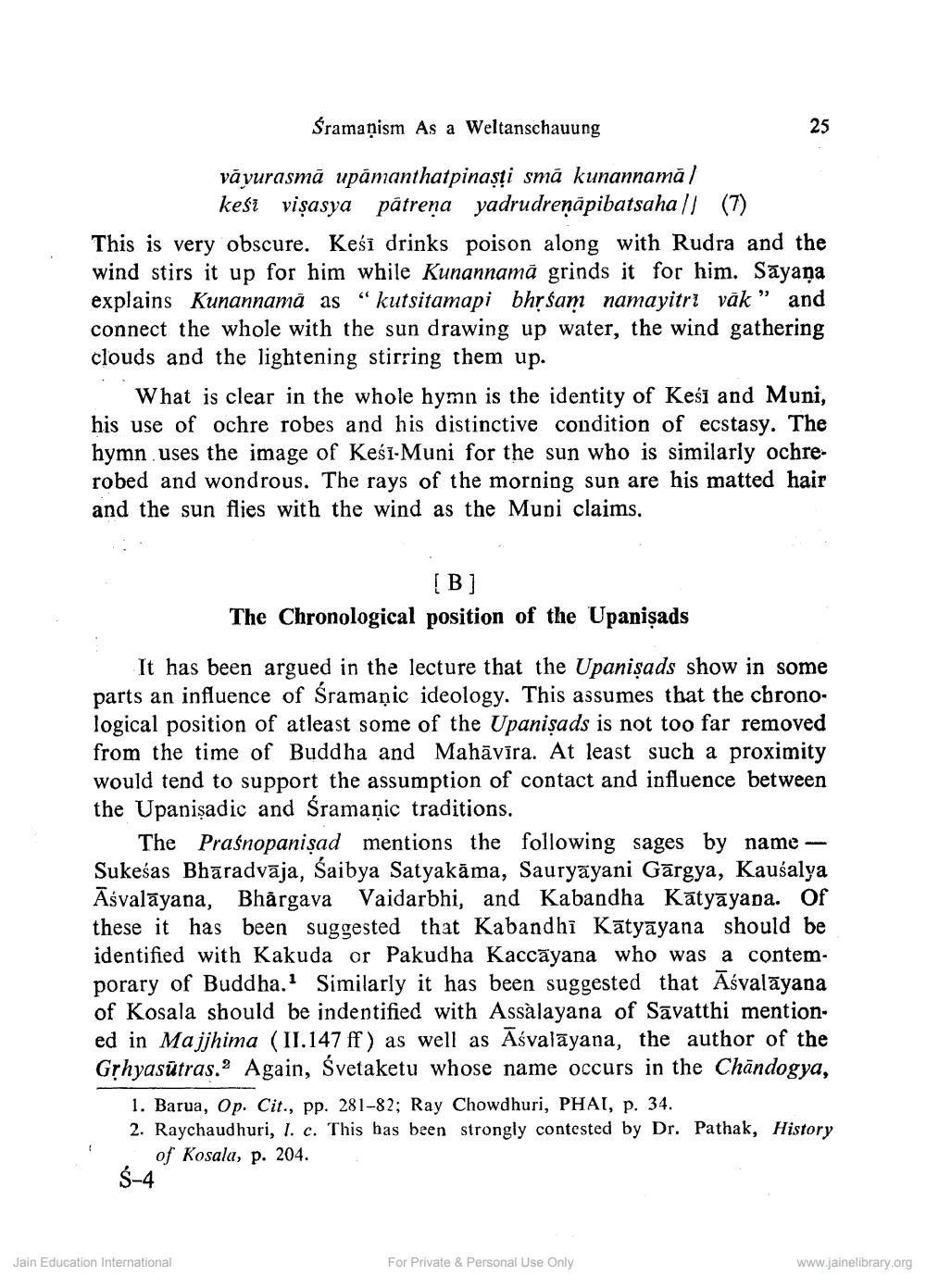________________
Śramaņism As a Weltanschauung
vă vurasmā upamanthatpinasi sma kunannamă /
kesi vișasya pătreņa yadrudreņāpibatsahal) (7) This is very obscure. Keśī drinks poison along with Rudra and the wind stirs it up for him while Kunannamā grinds it for him. Sāyana explains Kunannamā as “kutsitamapi bhr sam namayitri vāk” and connect the whole with the sun drawing up water, the wind gathering clouds and the lightening stirring them up.
What is clear in the whole hymn is the identity of Keśī and Muni, his use of ochre robes and his distinctive condition of ecstasy. The hymn uses the image of Kesi-Muni for the sun who is similarly ochrerobed and wondrous. The rays of the morning sun are his matted hair and the sun flies with the wind as the Muni claims.
[B] The Chronological position of the Upanişads
It has been argued in the lecture that the Upanişads show in some parts an influence of Sramaņic ideology. This assumes that the chronological position of atleast some of the Upanisads is not too far removed from the time of Buddha and Mahāvīra. At least such a proximity would tend to support the assumption of contact and influence between the Upanişadic and Sramanic traditions.
The Praśnopanişad mentions the following sages by name - Sukeśas Bharadvāja, Saibya Satyakāma, Sauryāyani Gārgya, Kausalya Āśvalayana, Bhảrgava Vaidarbhi, and Kabandha Katyayapa. Of these it has been suggested that Kabandhi Kātyāyana should be identified with Kakuda or Pakudha Kaccāyana who was a contemporary of Buddha. Similarly it has been suggested that Āśvalāyana of Kosala should be indentified with Assàlayana of Savatthi mentioned in Majjhima (11.147 ff) as well as Aśvalāyana, the author of the Gphyasūtras. Again, Śvetaketu whose name occurs in the Chāndogya,
1. Barua, Op. cit., pp. 281-82; Ray Chowdhuri, PHAI, p. 34. 2. Raychaudhuri, 1. c. This has been strongly contested by Dr. Pathak, History
of Kosala, p. 204. S-4
Jain Education International
For Private & Personal Use Only
www.jainelibrary.org




